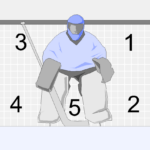I. Understanding Upcycled Wool: Benefits and Materials
II. Step-by-Step Guide to Creating Your Wool Soaker
III. Tips for Care and Maintenance of Your Upcycled Wool Soaker
Understanding Upcycled Wool: Benefits and Materials
Hey there! Have you ever considered upcycled wool for your crafting projects or for practical uses around the home? If not, you’re in for a treat! Upcycling wool is not just a creative outlet; it’s also a fantastic way to embrace sustainability while enjoying the many benefits of this versatile material. So let’s dive in and explore what upcycled wool is all about!
What is Upcycled Wool?
Upcycled wool is simply wool that has been repurposed from used clothing or textiles. Instead of tossing out that old wool sweater with the moth holes, you can give it a new lease on life! This practice of upcycling not only helps in reducing textile waste but also contributes to a more sustainable environment. And who doesn’t want to be more eco-friendly?
Benefits of Using Upcycled Wool
Now, let’s chat about the benefits of using upcycled wool:
- Environmental Impact: By choosing upcycled materials, you’re helping to decrease landfill waste and reduce the demand for new resources. It’s a win-win for the planet!
- Unique Textures and Colors: Every piece of upcycled wool has its own character! You can find an array of colors and textures that you won’t see in store-bought options, adding a personal touch to your projects.
- Cost-Effective: Upcycling can save you money! Instead of purchasing new fabric, you can often find old wool garments at thrift stores for a fraction of the price.
- Warmth and Insulation: Wool is naturally insulating, which means if you’re creating something like a wool soaker, it will help keep you warm and cozy without overheating.
Materials Used for Upcycled Wool
When it comes to materials, the world of upcycled wool is your oyster! Here are some common sources:
- Old Sweaters: Wool sweaters are one of the most popular choices. They can be felted and cut into new shapes and sizes!
- Blankets: Wool blankets can be a fantastic source of high-quality fabric. Just make sure to inspect them for any damages.
- Coats: Thrifted wool coats can provide a lot of fabric for larger projects.
- Scarves and Accessories: Don’t forget about scarves, hats, and mittens! These smaller items can often be transformed into something entirely new.
Final Thoughts
In conclusion, upcycled wool is an excellent choice for those looking to embrace sustainability while indulging in some creative DIY projects. Not only does it offer a unique aesthetic, but it also contributes positively to our environment. Plus, you’ll feel great knowing that you’re giving new life to materials that may otherwise be discarded. So next time you’re clearing out your closet, remember the potential of upcycled wool and let your imagination run wild!
Step-by-Step Guide to Creating Your Wool Soaker
Are you ready to dive into the wonderful world of DIY and create your very own upcycled wool soaker? It’s not only a fulfilling project but also a fantastic way to use materials that might otherwise go to waste. Let’s get started with a straightforward, step-by-step guide that will make the process enjoyable and easy!
What You’ll Need:
- Upcycled wool sweater or blanket
- Scissors
- Sewing machine (or needle and thread for hand sewing)
- Measuring tape
- Pattern (you can find free templates online)
- Pins
- Lanolin (for waterproofing)
Step 1: Choose Your Wool
Start by selecting your wool material. A felted wool sweater works perfectly; you want something that’s thick and retains heat. If you’re using a blanket, make sure it’s 100% wool. Check for any holes or weak spots, as you want a sturdy base for your soaker.
Step 2: Prepare Your Pattern
Once you have your wool, it’s time to grab your pattern. You can either draft your own or download a free one from the internet. Lay your wool flat and pin the pattern onto it, then carefully trace around it with a fabric marker. Don’t worry—this will wash out!
Step 3: Cut the Fabric
With your pattern traced, grab those scissors and cut out the shapes! Make sure to cut slowly and carefully to keep your edges neat. You should have two main pieces: the body of the soaker and a waistband. If your pattern includes legs or any extra features, cut those accordingly.
Step 4: Sew the Pieces Together
Now the fun part—sewing! If you’re using a sewing machine, set it to a zigzag stitch to allow the seams to stretch. Sew the sides of your soaker together, then attach the waistband piece to the top. If you’re hand sewing, a simple running stitch will work just fine. Remember to be patient; this is where your soaker starts to come to life!
Step 5: Try It On
Before you finish up, give your soaker a quick try-on to ensure the fit is just right. Wool has a bit of stretch, but you want it snug enough to be effective without being too tight.
Step 6: Adding the Finishing Touches
For that professional feel, consider adding some decorative stitching or embellishments if you’re feeling creative. You could use a contrasting thread color for a fun pop!
Step 7: Lanolizing Your Soaker
Now that your soaker is sewn, it’s important to lanolize it. This step helps make your soaker waterproof. Simply dissolve lanolin in hot water and soak your soaker in this mixture for a few hours. Rinse it gently and let it dry flat. Voila! You now have a beautiful, functional upcycled wool soaker!
Creating your own wool soaker is not just a practical endeavor; it’s a chance to express your creativity while being kind to the environment. Enjoy your crafting journey, and don’t forget to take pride in your handmade creation!
Tips for Care and Maintenance of Your Upcycled Wool Soaker
Congratulations on your upcycled wool soaker! Now that you’ve put in the love and creativity to make one, it’s time to keep it in tip-top shape. Caring for wool may seem daunting at first, but with the right tips and a little know-how, you’ll be a pro in no time!
1. Washing Your Wool Soaker
When it comes to washing your wool soaker, remember that less is more. Wool is naturally antimicrobial, so it doesn’t need to be washed as often as other fabrics. Here’s how to do it right:
- Spot Clean: For small stains or spills, try spot cleaning with a damp cloth and a bit of natural soap.
- Hand Wash: If your soaker needs a thorough wash, fill a basin with lukewarm water and a gentle wool wash (or a mild baby soap). Soak your soaker for about 10-15 minutes without agitating or wringing it. Gentle handling is key to preserving its shape!
- Rinse Carefully: Drain the soapy water and fill the basin with clean water to rinse. You may need to repeat this step to remove any soap residue.
2. Drying Your Wool Soaker
The drying process is crucial for your soaker’s longevity. Here are some best practices:
- Don’t Wring: After rinsing, gently press the water out without wringing. Wringing can distort the fibers and ruin the fit!
- Lay Flat: Place your soaker on a clean, dry towel and roll it up to absorb excess moisture. Then, lay it flat on another dry towel or a drying rack, reshaping it to maintain its original form.
- Avoid Heat: Keep your soaker away from direct sunlight or heat sources like radiators, as heat can shrink wool. Just let it air dry naturally!
3. Frequent Maintenance
To keep your wool soaker performing well over time, consider these maintenance tips:
- Lanolin Treatments: To maintain its waterproofing properties, you might need to lanolize your soaker every few months. This involves soaking it in a lanolin solution to help restore its natural oils.
- Store Properly: When the soaker is not in use, make sure to store it in a cool, dry place. Avoid mothballs; using cedar blocks or lavender sachets is a natural way to deter pests.
- Monitor for Pilling: After some use, your soaker might develop pilling. A gentle fabric shaver can help smoothen it out without damaging the fibers.
4. Know When to Replace
Like all good things, your wool soaker will eventually reach the end of its life. Watch for signs like:
- Fading colors or thinning fabric
- Loss of elasticity or shape
- Persistent odors even after washing
Staying aware of these signs will help you decide when it’s time for a new soaker. Remember, each soaker has a story, and with proper care, yours will continue to serve you well for many washes to come!
Happy caring, and enjoy your eco-friendly journey with your upcycled wool soaker!










Comments